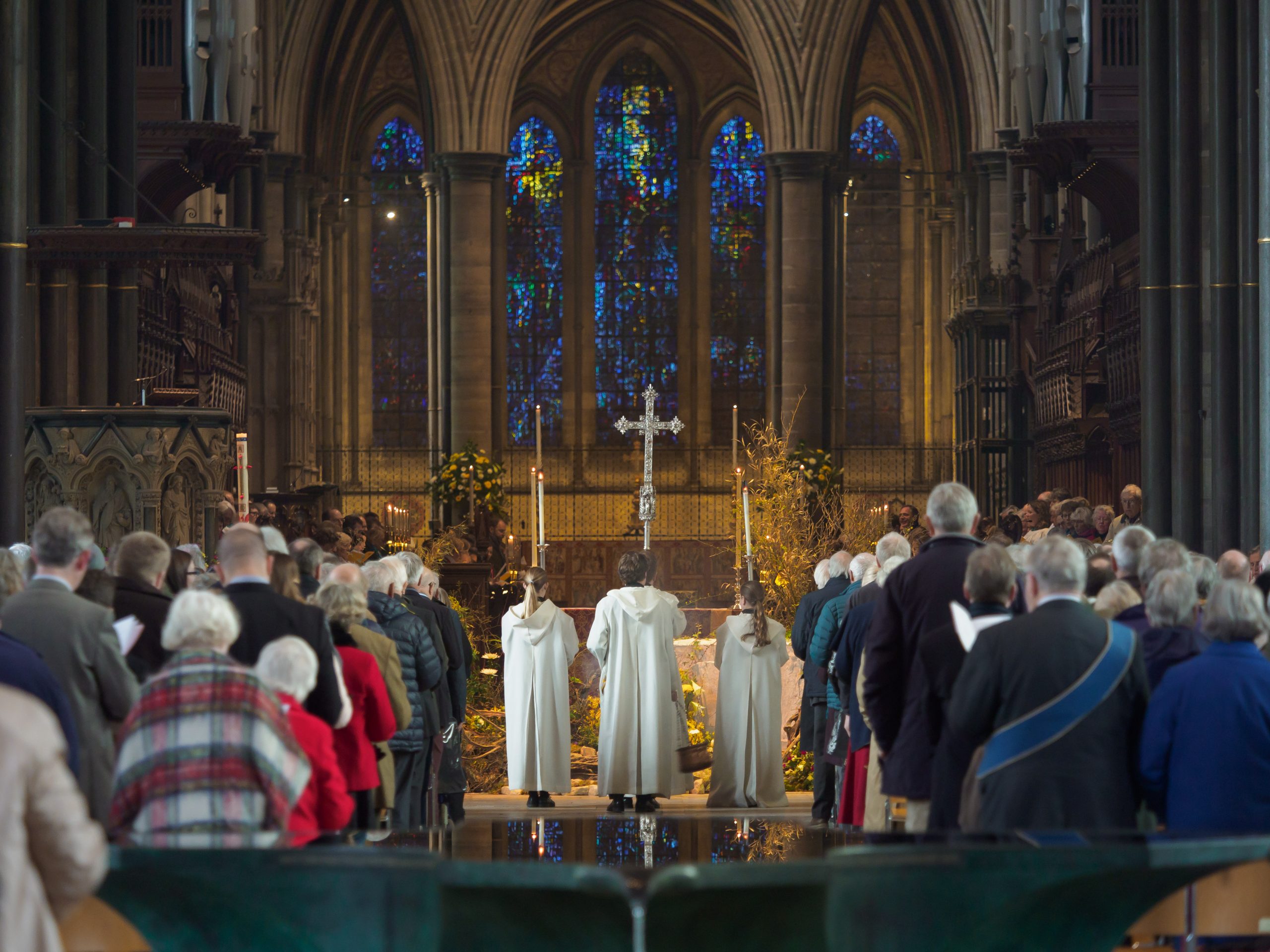God’s Pumpkins – a Sermon for All Saints Day
God’s Pumpkins – a Sermon for All Saints Day
Wednesday 1 November, Evensong
A sermon preached by The Very Reverend Nicholas Papadopulos, Dean of Salisbury
‘…All the saints are the fireworks of God, fascinating in their variety, exhilarating in their effect. How bright these glorious spirits shine! How various they are!’
Michael Stancliffe, the father of our former Bishop, died in 1987. He had recently retired from the Deanery of Winchester, and before that had served as a Canon of Westminster and the Preacher to Lincoln’s Inn. In a beautiful sermon for All Saints Day, published not long before his death but preached on a date which is unrecorded, he comments wryly on the early November preference that many have for bonfire parties rather than churchgoing, and writes winningly of the colour, spark, and sound seen both in fireworks and in the lives of the saints.
I wonder how he would approach that sermon today – when the weeks leading up to All Saints see the shops filled less with sparklers, squibs, and rockets than with skeletons, cauldrons, and witches’ hats. In 2023 last night’s festivities – those of Hallowe’en – seem to have a greater hold on the popular imagination than do those of Bonfire Night. And, somehow, I can’t imagine Stancliffe preaching on the saints as God’s pumpkins…
What accounts for this change, for the modern Hallowe’en’s recent eclipse of Bonfire Night? Bluntly, commercial potential: there’s any amount of money to be made by selling vampire outfits, devils’ horns, and spiders’ webs to a Hallowe’en party-going, trick-or-treating, thrill-seeking public. But perhaps we might briefly get over our cynicism, however well-founded. Bonfire Night was for many years a significant episode in the national story England told itself and told about itself as a proudly Protestant land which had shaken off the shackles of foreign tyranny. The discovery of the Gunpowder Plot and the arrest of the plotters put the seal on the new Stuart monarchy, on the downfall of their would-be assassins, and on the trickery of the Papists. It was celebrated by generation after generation. The waning of its popularity in our day at least suggests that that narrative is no longer valuable. Guy Fawkes, Robert Catesby, and even James I have faded into the mists of the deep past. Their story is no longer our story.
And the concomitant rise of Hallowe’en perhaps suggests that there is no longer a story at all – no longer one story, one story which is our story, and to which we can all subscribe. For the modern Hallowe’en is a celebration of whatever takes your fancy. Ghosts? Of course. Demons? Naturally. Axe-wielding zombies? Why ever not. For one night in the year the modern Hallowe’en brings together folklore-ish memory, sci-fi fantasy, and good, old-fashioned nastiness in one unholy alliance. It has no doctrine and no creed. Any nightmare will do – as Andrew Lloyd-Webber never wrote.
But perhaps we might get over our cynicism even further, and ask this: if we no longer live a shared story, then what does the modern Hallowe’en tell us about who we are and about who we are becoming? And perhaps one answer to that is found in the thing that ghosts, demons, and axe-wielding zombies all have in common. They are dead – or they are undead. We may no longer be a proudly Protestant land which has shaken off the shackles of foreign tyranny – but we remain a nation obsessed with – one might almost say bewitched by – our own mortality, the inexorable destiny of all humankind. Mummies, spooks and hobgoblins inhabit the unknown realm to which we are all headed. And it frightens us. That’s surely what the mock-horror, spine-tingling, deliciously creepy terrors of Hallowe’en are all about. They’re about making light of the death that will ultimately claim us all.
Which is why God’s fireworks, God’s holy saints, remain as relevant today as they were when ‘penny for the Guy’ could be heard on our street corners and Stancliffe was preaching in Winchester and London. For the saints remind us that we do share a story. Not a story that we write, a story of national grandiosity; still less a story of state-sanctioned religious bigotry. Rather, the lives and the deaths of God’s saints tell a story of God’s love for each of us – a love that is stronger than death and that will not be overcome by it. It may not be a story we value or a story we believe, but that does not alter our place in it. It is a story in which the ghouls of Hallowe’en have no place and no voice, for the evil that they represent has done its worst and has not prevailed; a story in which fear is put in its place by the hope expressed on that far-off mountain-top, the hope that the meek will inherit the earth, that the persecuted will win the kingdom, and that the pure in heart will see God.
‘The darker the world’ writes Michael Stancliffe, ‘the blacker the night, the brighter those glorious spirits shine, their whole lives spent unceasingly in celebration of the greatest of all victories and the highest of all royal occasions – the resurrection and ascension of the Lord Jesus’.
To which I say: Amen. Amen. Amen.




